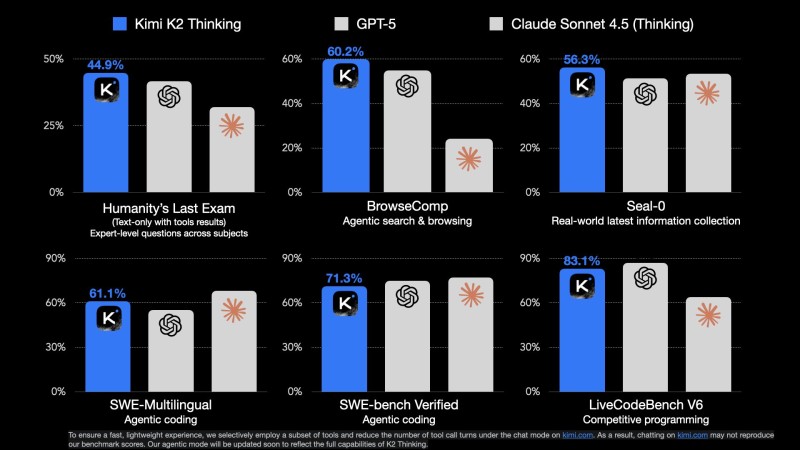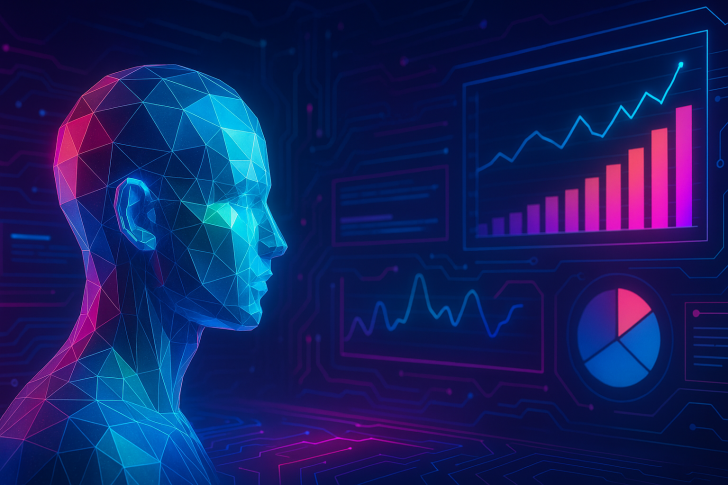The global AI landscape just got a lot more interesting. A new performance chart making waves on social media shows Kimi K2 Thinking — an emerging open-source model — outperforming leading proprietary models from OpenAI and Anthropic across multiple demanding tests. This could be another breakthrough moment for Chinese AI research, signaling that the competition at the frontier is heating up fast.
Kimi K2 Thinking Emerges as a Top-Tier Open-Source Model
Trader Okara recently highlighted Kimi K2 Thinking as a full-featured "thinking model" built for multitool agentic workflows, real-world information retrieval, and advanced reasoning.

The model comes with several standout features:
- 256K context window
- 200–300 sequential tool calls capability
- State-of-the-art scores on Humanity's Last Exam (44.9%) and BrowseComp (60.2%)
- 10× cheaper than GPT-5
- 20× cheaper than Claude Sonnet 4.5
That kind of cost advantage is hard to ignore, especially when paired with strong benchmark results.
Benchmark Analysis: Kimi K2 Thinking vs. GPT-5 and Claude Sonnet 4.5
The comparison chart available at https://okara.ai/ includes three leading models: Kimi K2 Thinking, GPT-5, and Claude Sonnet 4.5 (Thinking). Across six benchmarks, K2 either matches or beats both Western competitors.
On Humanity's Last Exam, K2 scored 44.9%, achieving state-of-the-art performance on this complex expert-level reasoning test. In BrowseComp, K2 hit 60.2% — the highest score among all three models, showing strong multi-step reasoning critical for agentic AI systems. K2 also led on Seal-0 with 56.3%, demonstrating solid accuracy in gathering real-world information.
For coding tasks, K2 scored 61.1% on SWE-Multilingual and 71.3% on SWE-bench Verified. The most impressive result came on LiveCodeBench V6, where K2 scored 83.1% — the highest mark on the entire chart. This benchmark is notoriously difficult and requires deep logical reasoning and precision.
Why These Results Matter
K2's performance reflects several important trends. Open-source models are rapidly closing the gap with proprietary giants — what used to require massive budgets is now achievable by leaner, public ecosystems. Agentic AI is becoming the new standard, with search, browsing, and tool-use benchmarks taking center stage. K2's strength in these areas is significant. Cost efficiency has emerged as a major competitive advantage, and being 10× to 20× cheaper dramatically changes the economics of large-scale deployment. And finally, China's AI acceleration continues, building on earlier momentum and showing sustained progress in frontier research.
A New Leader in Open-Source AI?
If K2's benchmark results hold up in real-world use, it could quickly become a go-to model for agentic AI systems, coding and software engineering automation, web-enabled workflows, multilingual development, and competitive programming tasks. The model is expected to be available soon.
 Peter Smith
Peter Smith

 Peter Smith
Peter Smith


